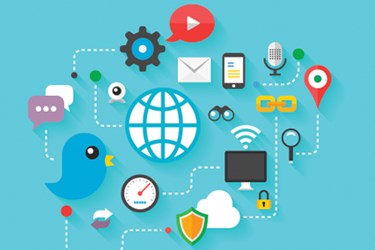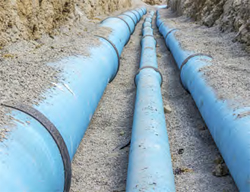Building Public Support for Efficiency-Oriented Water Rates

By Megan Chery, manager, Alliance for Water Efficiency
Utilities have the tools to explain why costs must rise while use goes down.
Water rates are on the rise as the water industry looks to fund unprecedented capital needs and cover increasing costs for everything from system maintenance to source water. Water rates increased by 23 percent from 2000 to 20101, and prices for water and sewer maintenance continue to rise at a rate much higher than the overall rate of inflation2. Simultaneously, utilities are moving towards efficiency-oriented rate structures that encourage consumers to use water wisely in an effort to meet growing demand with finite supplies. As a result, utility managers find themselves facing the unenviable communications challenge of having to ask customers to use less while paying more.
Water rates are typically subject to approval by at least one oversight body, such as a board of elected officials, who report to a diverse group of customers and stakeholders, requiring utilities to build external support for a rate change. Many utilities have struggled to effectively communicate the value — and cost — of a reliable supply of safe, affordable drinking water for today and for generations to come. With pipes buried underground and treatment plants far from view, water infrastructure and resource challenges have largely been “out of sight, out of mind” from the consumers’ perspective. The result is a lack of awareness about the water service consumers have come to expect and the invaluable role of utilities. A 2011 survey from The Nature Conservancy revealed that 77 percent of respondents could not accurately identify the natural source of the water used in their homes3.
The good news is that most utilities already have the tools to get their customers’ attention, and new cost-free or low-cost resources can help managers succeed despite budget constraints and limited staff. With the right public engagement plan and by incorporating principles of good communications, utilities can smooth the way for rates that keep them fiscally healthy and ensure sustainable management of resources.
Engage The Public As Partners
The value of public participation in formulating policies has become increasingly important, and rate changes are no different. Involving customers and other stakeholders in the initial stages of rate revisions conveys the message that customer concerns will be taken seriously. A community that feels responsible for the stewardship of its water resources and has an opportunity to shape resource management is more likely to be receptive to and supportive of difficult decisions.
There are numerous models for initiating productive dialogue with the public around a rate change. Town meetings provide open, informal, and participatory venues for sharing information and expressing concerns. Advisory committees or task forces can provide a more structured format but may also require more effort on the utility’s part to manage input and process recommendations. No matter the format, a successful public involvement process requires including diverse interests — especially those that may be averse to or significantly impacted by a rate change.
Utilities can also set themselves up for success by building dialogue with the public well before the need for a rate increase. Customer education should be a long-term effort and will result in greater public awareness over time. In 2013, the Albuquerque, NM Bernalillo County Water Utility Authority implemented Customer Conversations, an outreach program designed to generate public input regarding utility plans, policies, and programs4. Through interactive sessions regarding a variety of topics, they built a group of knowledgeable customers who, over time, became ambassadors for the water authority and set the stage to introduce needed rate adjustments to support revenue stability.
Tell The Utility’s Story
Regardless of the model chosen, introducing a new rate structure to the public requires different preparation and a different approach than internal briefings. Utilities should be prepared to demonstrate how water use efficiency will benefit the community from social, environmental, and economic perspectives. An analysis of costs that can be avoided or deferred thanks to conservation can provide positive data points and messages for customers.
For example, Westminster, CO, determined that conservation programs implemented since 1980 had saved customers 91 percent in rates compared to what they would have been had new facilities been built to meet growing demand5. Compiling this data point helped communicate to customers that rates are rising whether they conserved or not, but conservation would help slow or reduce those increases.
Every utility’s story will be different, but framing water use efficiency in terms of community well-being and providing backup data will help bring the point home. Managers should also be prepared for tough questions and be able to express complex topics in simple terms with the appropriate level of detail.
Plan Beyond Approvals
The approval of a rate structure change or rate increase is not the conclusion of the public engagement journey but rather the middle point. A well-organized implementation of a rate structure to the entire customer base is vital to the success of a rate structure in achieving its objectives. It is important to not overlook internal communications when preparing for a rate change. Customer service representatives and staff in the field are the utility’s front line of interaction with customers, and they should be prepared to deliver the same messages as utility leadership.
When Cobb County Water System in metropolitan Atlanta implemented conservation rates that would result in a 300 percent increase in water bills for some large users, they engaged the entire organization and paid particular attention to customer service and field staff. They provided thorough training and developed resources such as FAQs and bill comparisons to help them respond to questions confidently, accurately, and consistently. They also instituted a customer response SWAT team consisting of two designated individuals who handled escalated inquiries6.
Tailor And Focus The Message
In a world where consumers are bombarded with an endless stream of news and information from multiple devices, a relevant and focused message is the only kind that resonates.
Utility managers can break through by knowing their audiences and tailoring every message. Elected officials may be most concerned about the long-term impact to the financial and physical condition of the utility, compliance with regulations, immediate impact to the financial condition of the utility, and affordability when deciding whether to raise rates, according to a recent survey conducted by the Environmental Finance Center at University of North Carolina7. Business and community groups might care most about economic development. Utilities can prepare by providing clear information on individual bill impacts and how customers can reduce bills, or demonstrating how a rate increase, or lack thereof, will affect the utility’s ability to deliver reliable water service.
It is also important to be transparent. Though the issue of rates may be complex, utilities can seek ways to offer clear explanations rather than assuming an issue is too complicated for the customer to grasp.
Create Or Curate High Quality Content
Every communications strategy should be supported by a content strategy, or the planning, creation, delivery, and management of the words, images, and multimedia used to deliver a message. A content strategy enables an organization to tell a consistent story across multiple channels, communicate what the organization stands for, and allow employees and partners to participate.
While not every utility has the resources to develop multimedia assets such as infographics or enlist a professional to develop the perfect sound bite, developing engaging content doesn’t have to be cost-prohibitive. Fact sheets, FAQs, simple videos, or blog posts can help deliver the information customers need. Industry organizations are also pooling resources to create high-quality and adaptable content for utility use. The Alliance for Water Efficiency has produced consumer-friendly messages that can be adapted to support a rate restructuring, as well as a video that helps explain utility services and costs, available at www.FinancingSustainableWater.org.
Utilities can also be content curators. Collecting and sharing valuable content, while adding local flavor and insight, can help utilities become trusted, authoritative, and helpful in the eyes of customers. Organizations such as the U.S. EPA, the American Water Works Association (AWWA), and the Value of Water Coalition, the latter a new national effort to raise awareness of water issues, aggregate educational materials and videos to communicate the importance of water.
Think Outside The Bill Finally, utilities should consider how they will get their message out. It is becoming harder to reach customers given the shift to electronic bills and auto-pay; utilities need to be present where customers are and deliver messages repeatedly. The majority of people need to hear a message three to five times before they absorb it8.
Owned channels that the utility has control over, such as their website, email newsletters, and blogs can be the most cost-effective way to disseminate new content. Participating in social media communities such as Facebook and Twitter enables utilities to open up a two-way dialogue that is more authentic than traditional communications. D.C., for example, has recently used Twitter to humanize its three tunnel boring machines, named Lady Bird, Lucy, and Nannie. Each machine has a Twitter account to educate local residents about work to revamp the sewer system and converse in a friendly, humorous, and approachable way about neighborhood issues. The media can also be an  asset and can help direct public opinion when utilities engage editorial boards and explain a rate change early in the process.
asset and can help direct public opinion when utilities engage editorial boards and explain a rate change early in the process.
Utilities cannot begin to tackle the challenges of the 21st century as silent providers of a misunderstood service. Fortunately, utilities also have access to 21st century tools to tell a compelling story and change customer perceptions. Even without a rate increase on the horizon, the time is now to begin developing a relationship with customers. It is only through greater awareness that customers will begin to understand that our water service is worth paying for and begin to trust their water providers to make the right decisions for their community.
References
1. Columbia University, America’s Water: An Exploratory Analysis of Municipal Water Survey Data, 2013
2. Michigan State University Institute of Public Utilities, Trends in Consumer Prices for Utilities Through 2014, 2015
3. The Nature Conservancy, More than Three-Quarters of Americans Don’t Know Where Their Water Comes From, 2011
4. Albuquerque Water Utility, 2013
5. Alliance for Water Efficiency, Conservation Helps Limit Rates Increases for Colorado Utility, 2014
6. Alliance for Water Efficiency, Cobb County, Georgia, Successfully Implements Efficiency-Oriented Rate Structure and Educates Customers through Targeted and Strategic Public Engagement Effort, August 2014
7. UNC Environmental Finance Blog, The Power of Words: Survey Results on Communicating the Need for a Water Rate Increase Part 2, March 2015
8. Edelman goodpurpose study, 2012
 About The Author
About The Author
Megan Chery is a manager with the Alliance for Water Efficiency, where she manages communications efforts and the Financing Sustainable Water Initiative.
